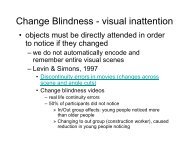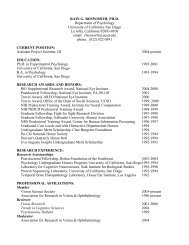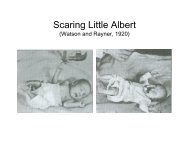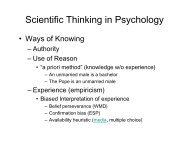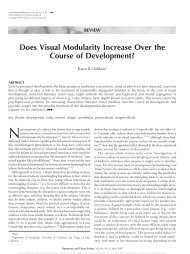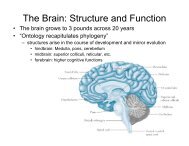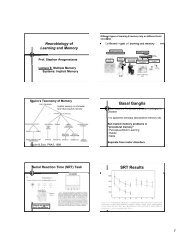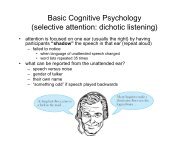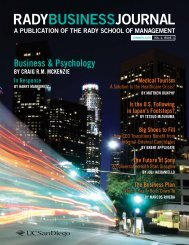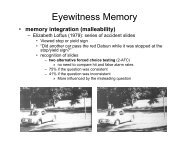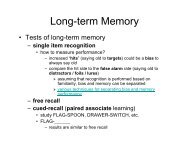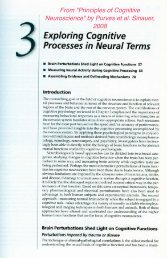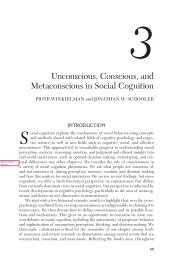For Peer Review Only - Establishing New Traditions
For Peer Review Only - Establishing New Traditions
For Peer Review Only - Establishing New Traditions
You also want an ePaper? Increase the reach of your titles
YUMPU automatically turns print PDFs into web optimized ePapers that Google loves.
Page 13 of 22<br />
1<br />
2<br />
3<br />
4<br />
5<br />
6<br />
7<br />
8<br />
9<br />
10<br />
11<br />
12<br />
13<br />
14<br />
15<br />
16<br />
17<br />
18<br />
19<br />
20<br />
21<br />
22<br />
23<br />
24<br />
25<br />
26<br />
27<br />
28<br />
29<br />
30<br />
31<br />
32<br />
33<br />
34<br />
35<br />
36<br />
37<br />
38<br />
39<br />
40<br />
41<br />
42<br />
43<br />
44<br />
45<br />
46<br />
47<br />
48<br />
49<br />
50<br />
51<br />
52<br />
53<br />
54<br />
55<br />
56<br />
57<br />
58<br />
59<br />
60<br />
emotional-space represented in the frontal cortices and insula on to color-space in V4 and its<br />
projection zones. In a demonstration of this preliminary data, we have mapped several of TK's<br />
emotion-color associations in color space (Figure 4), though additional experiments are needed<br />
to test this intriguing notion of color taxonomy.<br />
<strong>For</strong> <strong>Peer</strong> <strong>Review</strong> <strong>Only</strong><br />
------ Figure 4----<br />
Although presumably evoked through similar mechanisms as in other forms of the<br />
condition, TK’s synesthesia seems to also be a vital aspect of his conscious understanding of<br />
emotions. Evidence of this comes from two observations. First, TK claims that recognition of<br />
emotion can only occur after he experiences the color. Second, when TK wishes to express his<br />
emotion (e.g. through a facial expression), he must tell himself to “do green” (in the case of<br />
happiness). This not only provides evidence for the necessity of using color to judge emotions,<br />
but also provides preliminary evidence that his synesthesia is embodied. Unlike previously<br />
reported evidence for embodiment in neurotypyicals which is centered around connecting<br />
emotions with facial expressions (Oberman, Winkielman, Ramachandran, 2007), TK’s<br />
embodiment appears grounded in his ability to “simulate” the color of other’s emotions with that<br />
of his own.<br />
It is well known that strong anatomical links exist in primates between emotions and<br />
color (e.g. to detect fruits and rumps in estrus), mediated, perhaps, by connections between v4<br />
and insula which projects to limbic/emotional structures such as amygdala (and also indirectly to<br />
frontal structures that may modulate more subtle emotions like arrogance and pride). An<br />
enhancement of these connections due to defective pruning or disinhibition would explain why<br />
he had more vivid color- emotion links (which were also subsequently enhanced through early<br />
childhood training).<br />
Neurocase<br />
URL: http:/mc.manuscriptcentral.com/nncs Email: hbc@mail.med.upenn.edu<br />
13



